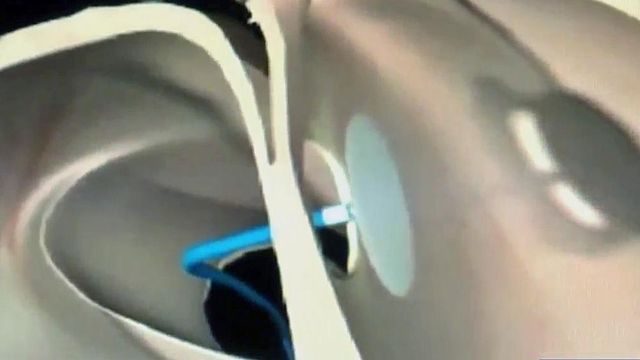Heart procedure can minimize stroke risk
Stroke is the fifth leading cause of death in the U.S. and the leading cause of disability. Doctors generally don't pin down the exact cause, but a certain round of tests may reveal a hole inside the heart. That hole can be the culprit for strokes.
Posted — UpdatedDoctors generally don't pin down the exact cause, but a certain round of tests may reveal a hole inside the heart. That hole can be the culprit for strokes.
UNC Rex Healthcare cardiologist Dr. Willis Wu closed up a hole inside one of his patient's heart recently.
Stored inside the tip of a catheter, a soft, flexible device used during the procedure will seal both sides of that hole.
A Patent Foramen Ovale is the official name of a hole between the two upper chambers of the heart that does not completely close after birth in some people. Doctors say it occurs in about 25 percent of the population.
For most people, it never causes any problems.
But when other common causes of stroke are ruled out, a PFO can be implicated.
The opening can allow clots to pass through.
"They're exposed to the left side of the heart, which can then eject anything into the brain, and therefore cause a stroke in that way," Wu said.
Most guidelines don't recommend that patients undergo a procedure to close the hole. Instead, they favor blood-thinning medications alone to prevent blood clots.
But recent studies led a panel of experts with the British Medical Journal to change recommendations for patients age 60 and younger who have survived a stroke or mini-stroke. If tests confirm the PFO, the catheter approach is strongly recommended.
"Those who got the closure of the PFO actually had less recurring neurologic events, including strokes and mini-strokes compared to patients who took only medicines," Wu said.
The new recommendations include having patients consume aspirin or Plavix for six months instead of taking stronger medications for years, which increase the risk of bleeding.
Any heart catheter procedure comes with risks but new evidence shows it's more effective at preventing another stroke than medical therapy alone.
Said Wu: "And the procedure takes about 30 to 60 minutes, and then if everything goes OK, the patient can leave the same day."
Wu says the PFO procedure should involve a collaboration between a patient's cardiologist and neurologist. Those discussions can lead to a consensus as to the best approach for the individual patient.
Related Topics
• Credits
Copyright 2024 by Capitol Broadcasting Company. All rights reserved. This material may not be published, broadcast, rewritten or redistributed.




